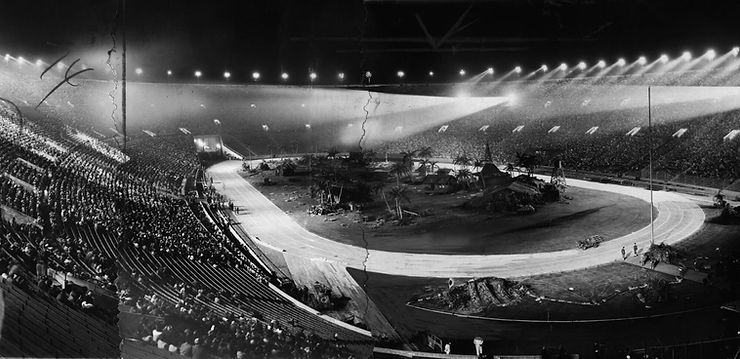By: Kaitlyn Zhou
As a grounds manager at the Motocross championships stadium, Scott Lupold is responsible for maintaining a clean, spotless field. In the 100 years since the opening, the Colisuem needed to learn a few tricks when morphing standard turf to surfaces such as dirt, asphalt, ice, and even snow.
The stadium’s history of extreme makeovers dates back to its opening in 1923, the start of a long, trial-and-error process.
“I feel uneasy whenever the tended grass gets trampled,” Lupold claims. He also says because of this, he has plenty of nights where he lays in bed awake.
Frank Guridy, a Columbia University professor who studies the civic impact of stadiums and arenas, said that the Coliseum wasn’t built for just one purpose, but rather is a single-tiered, old-fashioned facility big enough to accommodate a bunch of different things.
Lupold wanted a clean field, for players to be able to play without the consent of slipping on the grass. Their new strategy put Lupold on the spot, and also allowed NASCAR engineers to cover the stadium’s floor with nearly 14,000 cubic yards of asphalt for a quarter-mile oval track last winter.
“We’ve got multiple fields being grown out there for different events,” Lupold says. “We know what we’re getting and we know how to get it to a point where it’s ready to roll.”
Swapping the old stuff for new sod costs hundreds of thousands of dollars, an expense that is passed along to promoters. Short turnarounds require rolls of thicker, heavier sod at a higher price.
Lupold explained that they’ve already done a lot of things with concerts and replaced the field on really short notices. “Knock on wood, we’ve been pretty good at pulling it off.”
A football game with Trojans against the Sun Devil was being played for just a few minutes. Normally feeling uneasy, Lupold had started to settle down. The game continued on, and no players slipped.











